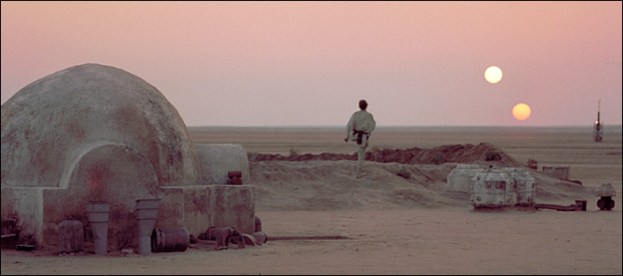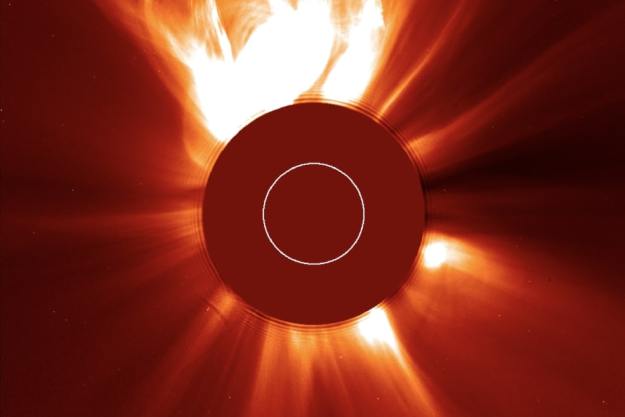 NASA may have located the childhood home of Luke Skywalker. The discovery of a planet that orbits two suns was made even more awesome when it was named Tatoonie, in honor of Star Wars. Luke’s desert home world famously had two Suns, which scientists claimed was impossible. The bad news is that researchers think that the planet is more like Saturn than the Tatoonie from the movie.
NASA may have located the childhood home of Luke Skywalker. The discovery of a planet that orbits two suns was made even more awesome when it was named Tatoonie, in honor of Star Wars. Luke’s desert home world famously had two Suns, which scientists claimed was impossible. The bad news is that researchers think that the planet is more like Saturn than the Tatoonie from the movie.
Astronomers used the orbiting Kepler telescope to study the planet. They noticed that the planet orbited both stars, and witnessed an eclipse of one star caused by the other star. It is believed that the gas planet and the two suns it orbits were formed at the same time by the same disc of dust and gas.
If you want to get official the planet is technically named Kepler 16(AB)-b, which is possibly the most boring name in the galaxy, which is why it has been nicknamed Tatoonie. If you wanted to find Kepler 16(AB)-b you would do so by traveling to the Cygnus constellation, which happens to be 200 light years away. Despite the fact that the planet has two suns it is believed to be quite chilly on Tatoonie. Researchers believe that the temperature ranges from negative 150 degrees Fahrenheit to negative 100 in the “summer”.
This is the second be space discovery announced this week, early this week we learned about the discovery of 16 Super Earths. Unlike one of those super Earths it seems very unlikely that Tatoonie can support life as we know it.
So when George Lucas told us that the Star Wars movies took place, “a long time ago in a galaxy far, far away” we now know that he meant roughly 200 light years away.
Editors' Recommendations
- What comes after Webb? NASA’s next-generation planet-hunting telescope
- NASA’s Mars Reconnaissance Orbiter is taking a two-week vacation
- NASA planet-hunter telescope locates first Earth-sized planet in habitable zone
- NASA will contribute spectroscopy instrument to a planet-hunting mission
- Can NASA’s experimental electric airplane, the Maxwell X-57, save the planet?


